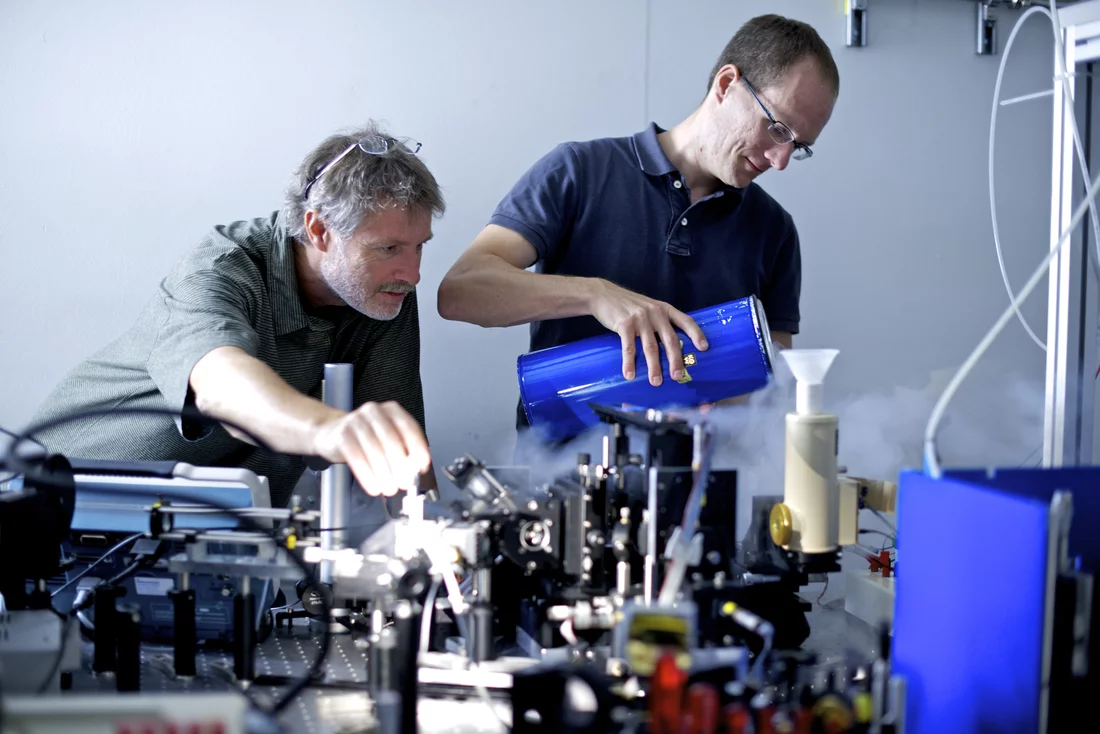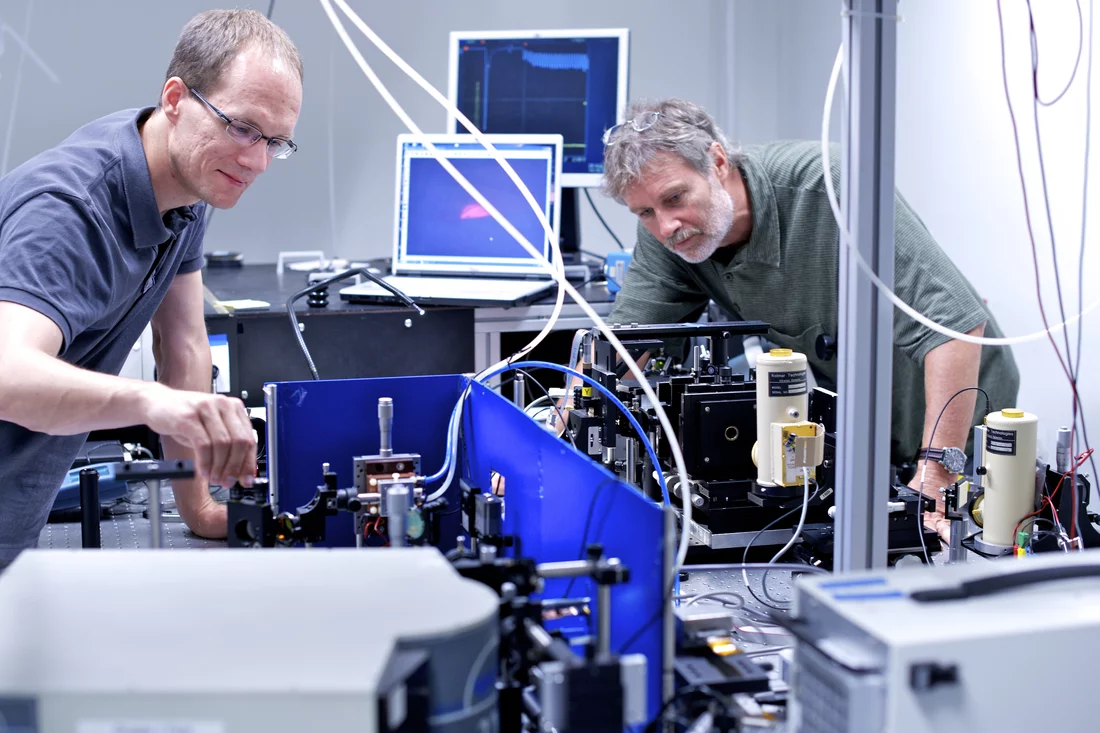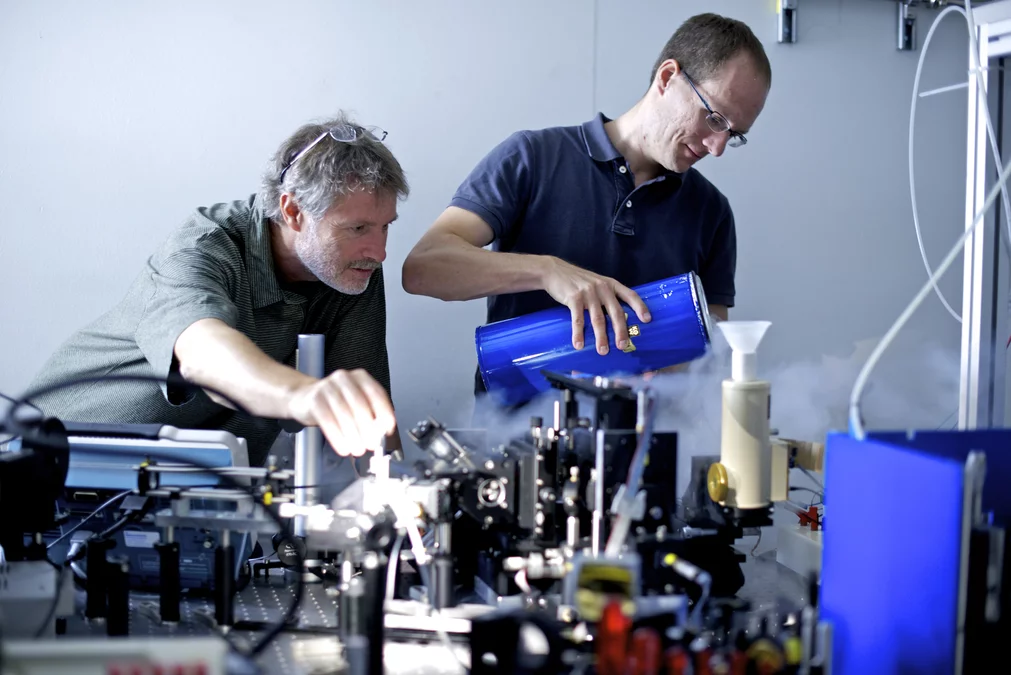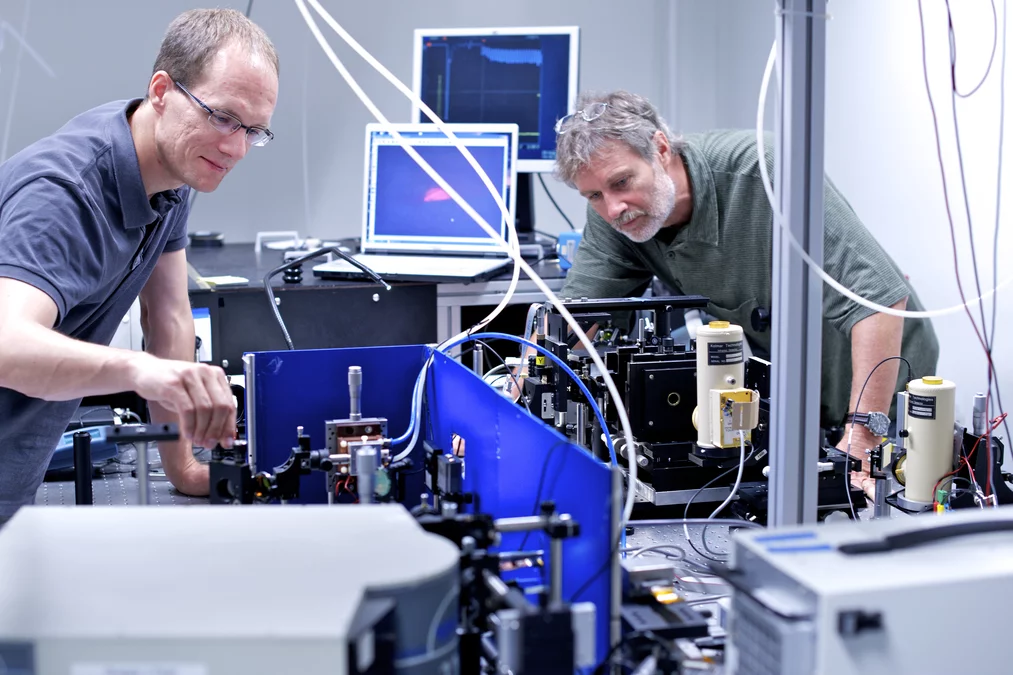Paul Scherrer Institute (PSI) researchers have investigated the mechanisms necessary for enabling the semiconductor Germanium to emit laser light. As a laser material, Germanium together with Silicon could form the basis for innovative computer chips in which information would be transferred partially in the form of light. This technology would revolutionise data streaming within chips and give a boost to the performance of electronics. The researchers have demonstrated that Germanium must be put under strain by an external force in order to turn it into a laser material material and have thus contributed to a very active research field. The decisive investigations were carried out by the scientists at the Swiss Light Source (SLS) at PSI and their results have recently appeared in the scientific journal ‘Physical Review Letters’. The research was supported by the Swiss National Science Foundation (SNSF).
In 1965, Gordon Moore proposed a law stating that the surface density of transistors in computer chips – and consequently their computing power – would double every two years. This law has proved to be valid since the beginning of the digital age; that is, since the introduction of the first integrated circuits for micro-processors, in 1960. However, in spite of the increasing number of transistors in computer chips, as well as other progress which has been made, the overall performance of processors has not been able to follow Moore’s Law for the past decade, and specialists are now talking about ‘Moore’s Gap’. The reason for this is that modern chips have more cores – individual processors – that can only relatively slowly communicate with each other using current technology.
“Actually, we do know a way in which this gap can be closed. The key concept is “optical data transfer” between the different cores on the chip”, explains Hans Sigg, a PSI scientist. “This means partially transferring information inside a chip with the aid of laser pulses, which would significantly speed up the information exchange.” In order to do this, tiny lasers are needed which can be built into chips to send out light pulses. These, however, have so far not been available.
Tiny Germanium Lasers should make Chips faster
Sigg’s research team, together with colleagues from the ETH Zurich and the Politecnico di Milano, has now been able to confirm that Germanium, under certain conditions, can function as a laser material. “Germanium lasers could make a break-through possible here, because Germanium can be readily combined with Silicon, which is the basic material from which chips are made. Silicon itself cannot emit light and can hardly be combined with any available laser material”, points out Sigg.
In their studies, which were performed at the Swiss Light Source (SLS) at PSI, the researchers investigated those properties of Germanium that are important for the generation of laser light, and compared them with those of currently available laser materials. “We stimulate the material by means of a powerful laser and simultaneously observe the changes occurring using infra-red radiation from the SLS”, elucidates the doctoral student Peter Friedli, who carried out the decisive experiments together with scientist Lee Carroll. “To do this, we used the fact that these light pulses are only 100 picoseconds (i.e. 0.1 billionths of a second) long, allowing us to follow the relevant processes in the material; that is, the behaviour of electrons at different points in time.”
Germanium must be deformed
“Our results are, on the one hand, encouraging, because Germanium behaves similarly to traditional laser materials, and therefore the possibility of it emitting light cannot be excluded”, says Sigg enthusiastically, “but with the limitation that the balance between amplification and loss is still so unfavourable in the Germanium layers investigated so far that the material does not yet fulfil the condition for emitting laser light.” But it has been demonstrated that this condition can be more closely approached the more the Germanium is put under strain using an external force. The researchers hope to achieve the necessary conditions for the Germanium in a follow-up project. For this, they will use a new technology that allows the strain to be greatly increased.
This research project has been supported by the Swiss National Science Foundation (SNSF).
About PSI
The Paul Scherrer Institute develops, builds and operates large, complex research facilities, and makes them available to the national and international research community. The Institute's own key research priorities are in the investigation of matter and material, energy and the environment; and human health. PSI is Switzerland's largest research institution, with 1500 members of staff and an annual budget of approximately 300 million CHF.
Contact
Dr. Hans Sigg, Laboratory for Micro- und Nanotechnology, Paul Scherrer Institute, 5232 Villigen PSI, Switzerland;Telephone: +41 56 310 40 48, E-mail: hans.sigg@psi.ch
Original Publication
Direct-Gap Gain and Optical Absorption in Germanium Correlated to the Density of Photoexcited Carriers, Doping, and StrainLee Carroll, Peter Friedli, Stefan Neuenschwander, Hans Sigg, Stefano Cecchi, Fabio Isa, Daniel Chrastina, Giovanni Isella, Yuriy Fedoryshyn, Jérôme Faist
Phys. Rev. Lett. 109, 057402 (2012);
DOI: 10.1103/PhysRevLett.109.057402
Background article to the methods used:
Ultra-broadband infrared pump-probe spectroscopy using synchrotron radiation and a tuneable pump
Lee Carroll, Peter Friedli, Philippe Lerch, Jörg Schneider, Daniel Treyer, Stephan Hunziker, Stefan Stutz, and Hans Sigg
Rev. Sci. Instrum. 82, 063101 (2011);
DOI: 10.1063/1.3592332
Background article about other apporaches
A Ge-on-Si laser operating at room temperature
Jifeng Liu, Xiaochen Sun, Rodolfo Camacho-Aguilera, Lionel C. Kimerling, and Jurgen Michel
Optics Lett. 35, 679 (March 2010),
DOI: 10.1364/OL.35.000679




